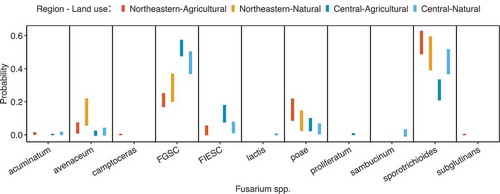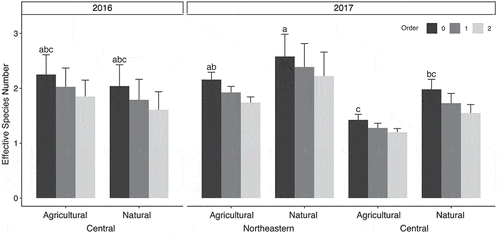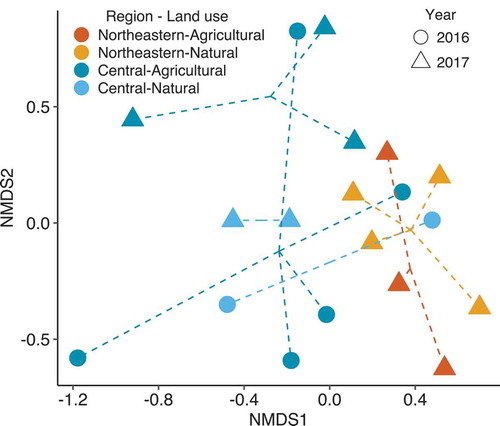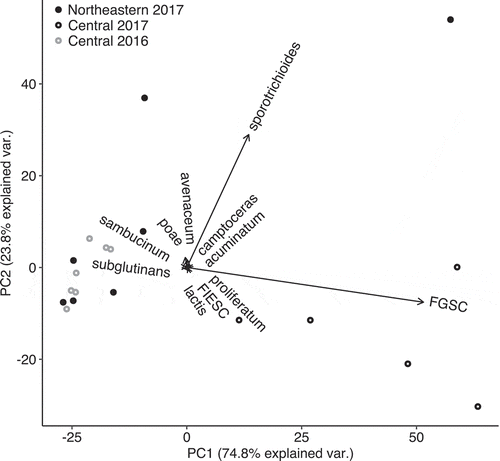Figures & data
Fig. 1 Grass inflorescences were sampled from 19 locations over 2 years. Field sites were divided between two regions of New York State and two land-use categories: agricultural and natural

Table 1. Sampling depth over years, regions and land uses
Table 2. Fusarium isolates recovered from grass species
Fig. 2 The probability of a given Fusarium species occuring in a region and land use. Bars represent 95% confidence intervals from multinomial logistic regression estimates

Fig. 3 Effective species, or Hill numbers (qD), were obtained by rarifying species abundance and compared across year, region, and land use. Fusarium species diversity differed significantly between years and regions but not between land uses. Filled bars represent mean values and error bars indicate standard deviation. Pairwise comparisons were conducted to identify differences in mean effective species number at each order of q, and Tukey’s Honest significant differences were calculated at alpha = 0.05. Bars of the same shade with the same letter were not significantly different

Fig. 4 Community dissimilarity visualized with a non-metric multidimensional scaling plot (Stress = 0.141). According to a PERMANOVA of Bray-Curtis dissimilarities, the effect of year and region were significant

Fig. 5 Principal components analysis of Fusarium species abundance at 19 sites. Community differences were attributable to large variation in the occurrence of two Fusarium species, sporotrichioides and graminearum. Central New York sites in 2016 experienced a drought, which led to communities more similar to those in low host density Northeastern New York during 2017 than to nearby communities in 2017 during a year of average rainfall

